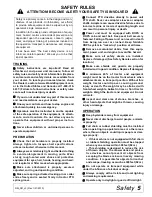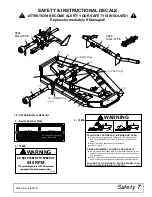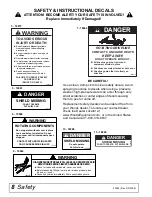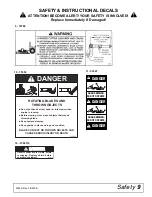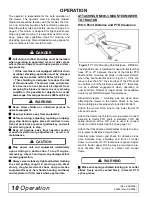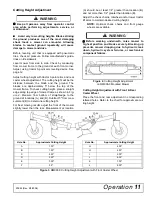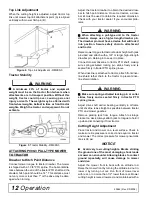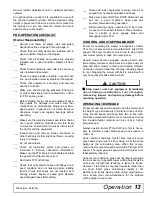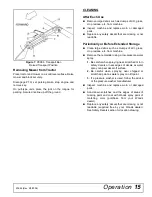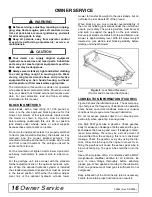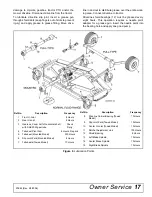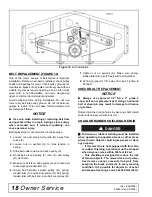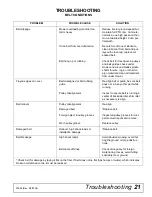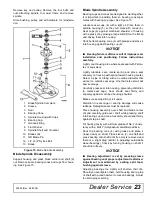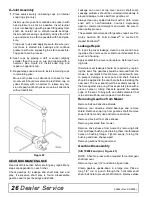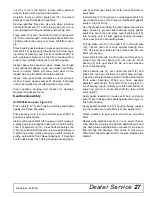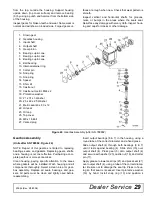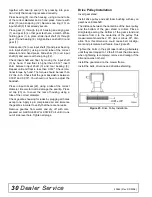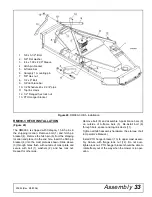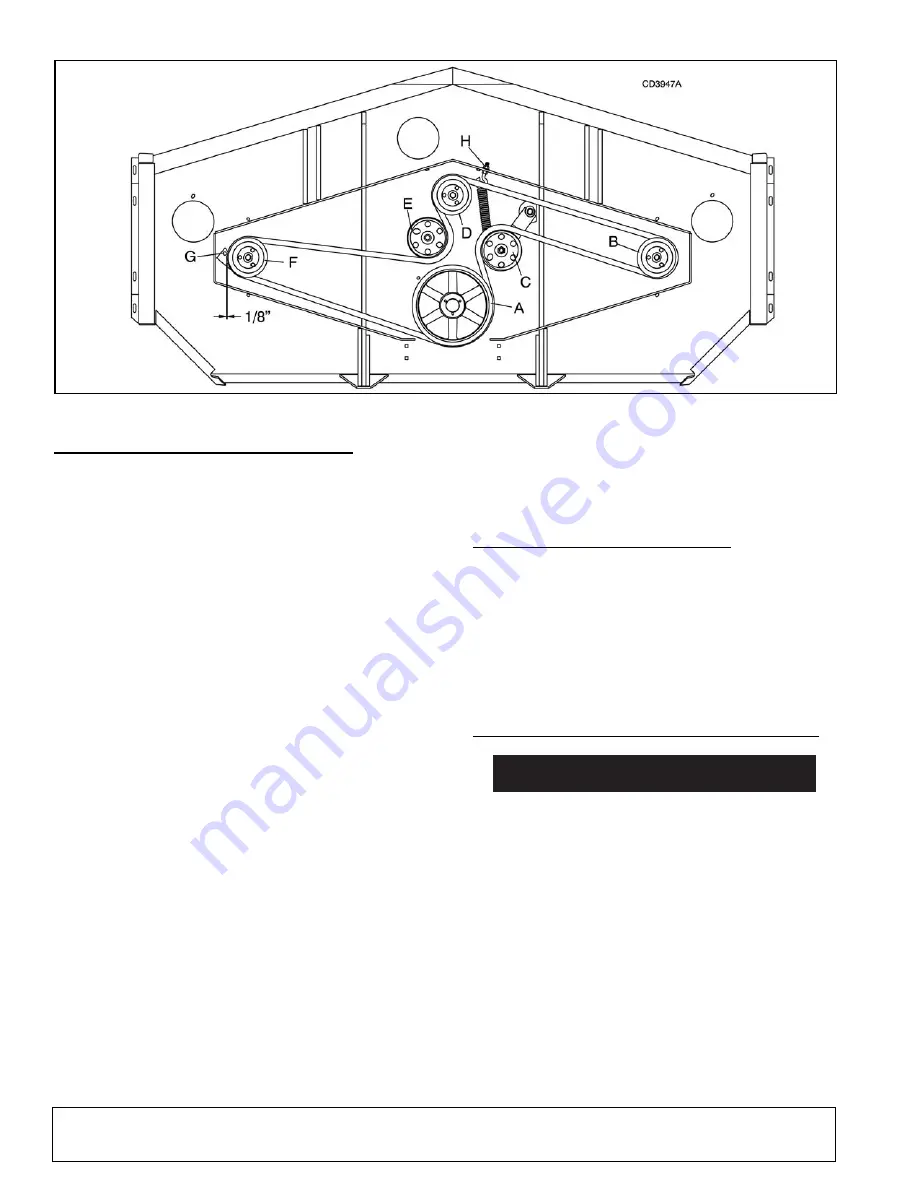
18 Owner Service
20944 (Rev. 2/3/2006)
Figure 10. Belt Installation
BELT REPLACEMENT (FIGURE 10)
One of the major causes of belt failure is improper
installation. Before a new belt is installed, check pulley
shafts and bearings for wear. Check pulley grooves for
cleanliness. Make sure spindles turn freely and without
wobble. If grooves require cleaning, use a cloth moist-
ened with a non-flammable, non-toxic degreasing
agent or commercial detergent and water.
Avoid excessive force during installation. Do not use
tools to pry belt into pulley groove. Do not roll belt over
pulleys to install. This can cause hidden damage and
premature belt failure.
NOTICE
■
Use care when installing or removing belt from
spring-loaded idler in step 6. Springs store energy
when extended and, if released suddenly, can
cause personal injury.
Belt replacement is accomplished in these steps:
1. Loosen nut and swing belt guide (G) away from
pulley (F).
2. Loosen nut on eyebolt (H) to relax tension in
spring.
3. Slide belt under and around drive pulley (A).
4. Route belt around pulley (F), idler (E) and pulley
(D) as shown.
5. Make sure belt is on drive pulley (A) and route belt
around spring-loaded idler (C).
6. Grasp belt between spindle pulley (B), spring-
loaded idler (C) and spindle pulley (D). Pull spring-
loaded idler with belt and route belt over pulley (B).
7. Tighten nut on eyebolt (H). Make sure spring-
loaded idler arm pivots freely with belt installed.
8. Set belt guide (G) 1/8" away from belt. Tighten to
85 lbs-ft.
SHEAR BOLT REPLACEMENT
NOTICE
■
Always use approved 1/2" NC x 3" grade 2
shear bolt as a replacement part. Using a hardened
bolt or shear pin may result in damage to driveline
or gearbox.
Rotate driveline to align holes in yoke and shaft. Install
shear bolt and secure with lock nut.
CHAIN OR RUBBER SHIELDING REPAIR
Full chain or rubber shielding must be installed
when operating in populated areas or other areas
where thrown objects could injure people or dam-
age property.
• If this machine is not equipped with full chain
or rubber shielding, operation must be stopped
when anyone comes within 300 feet (92 m).
• This shielding is designed to reduce the risk
of thrown objects. The mower deck and protec-
tive devices cannot prevent all objects from
escaping the blade enclosure in every mowing
condition. It is possible for objects to ricochet
and escape, traveling as much as 300 feet (92 m).
A
DANGER
(Rev. 4/28/2006)


